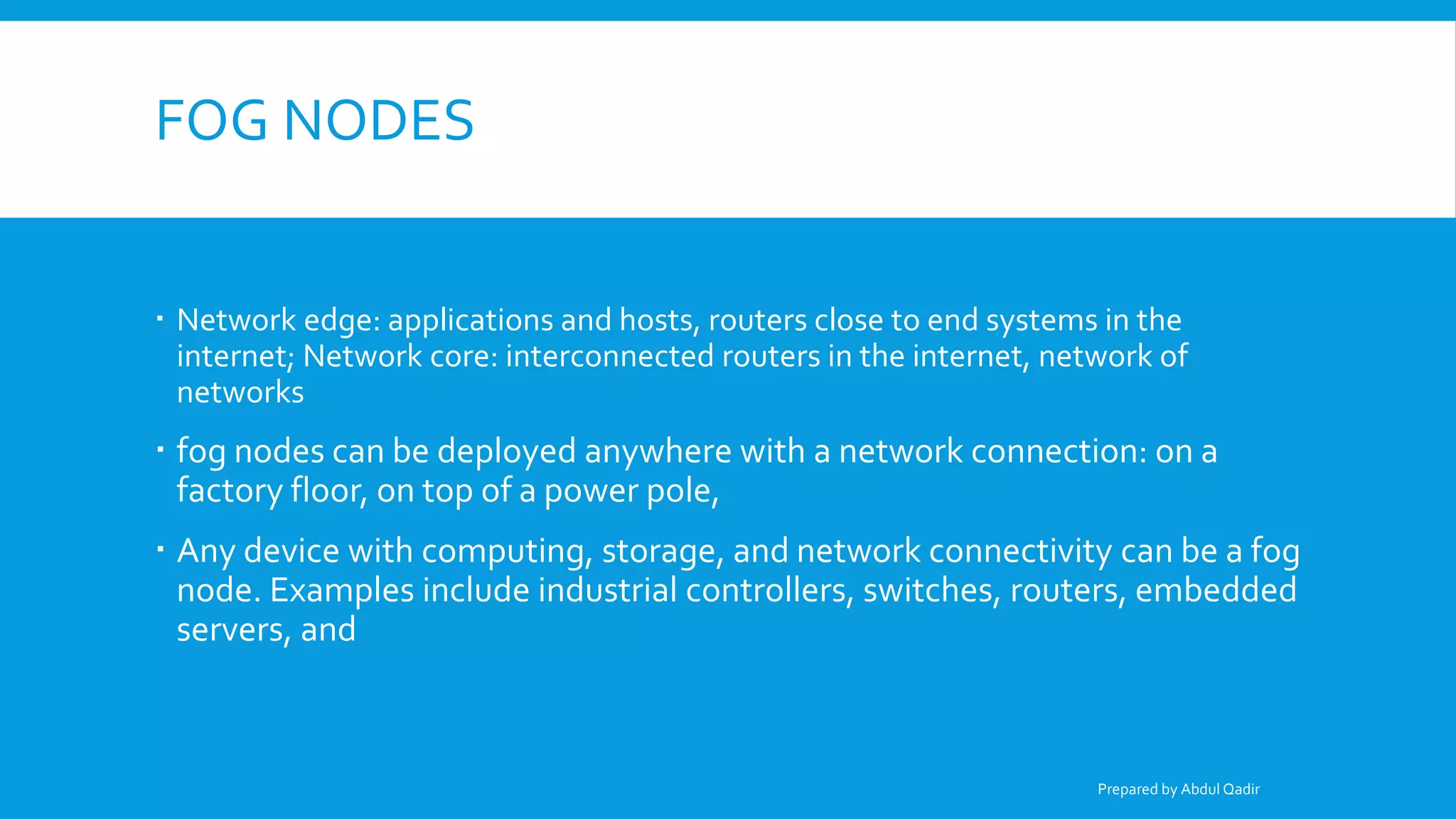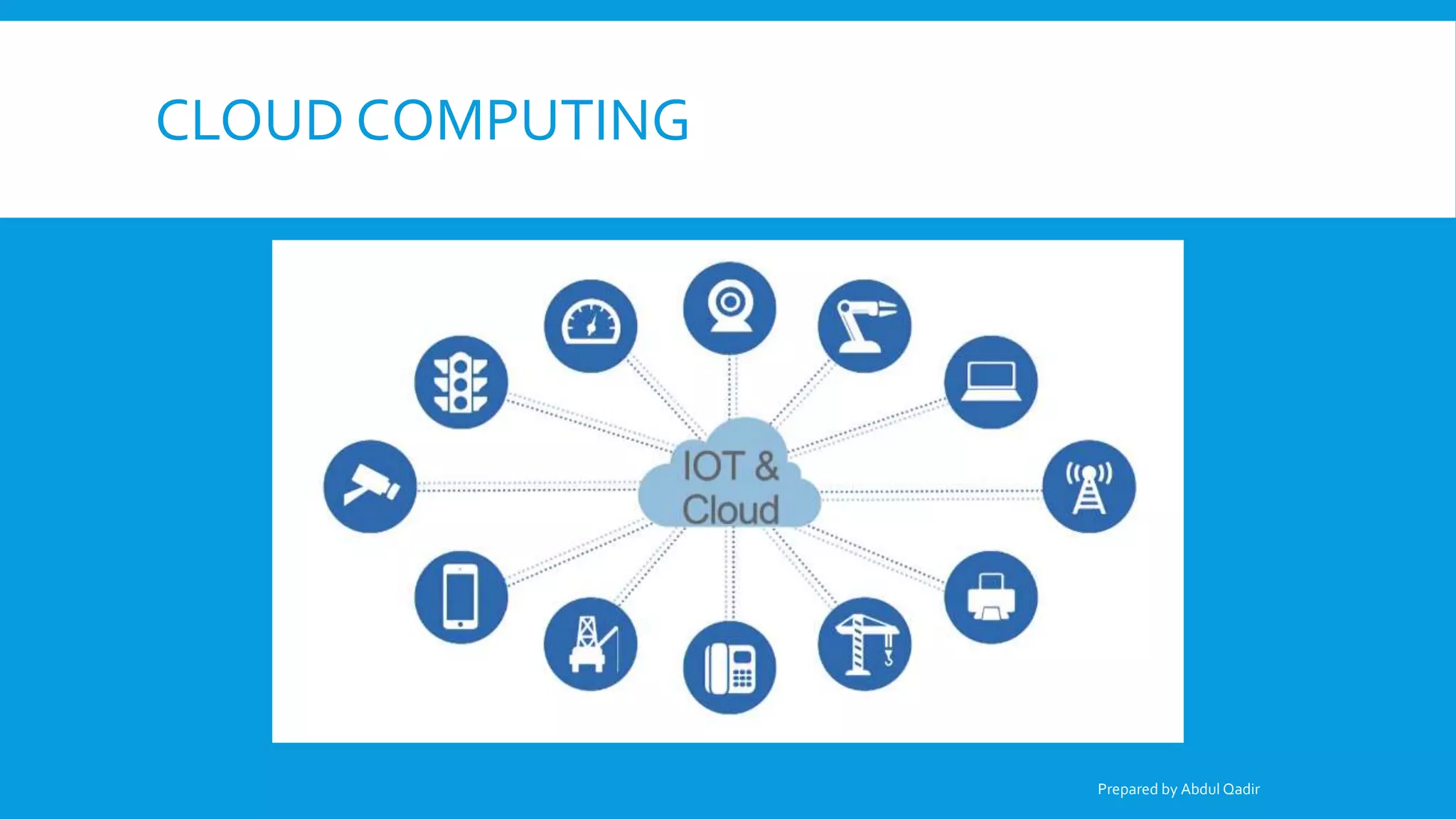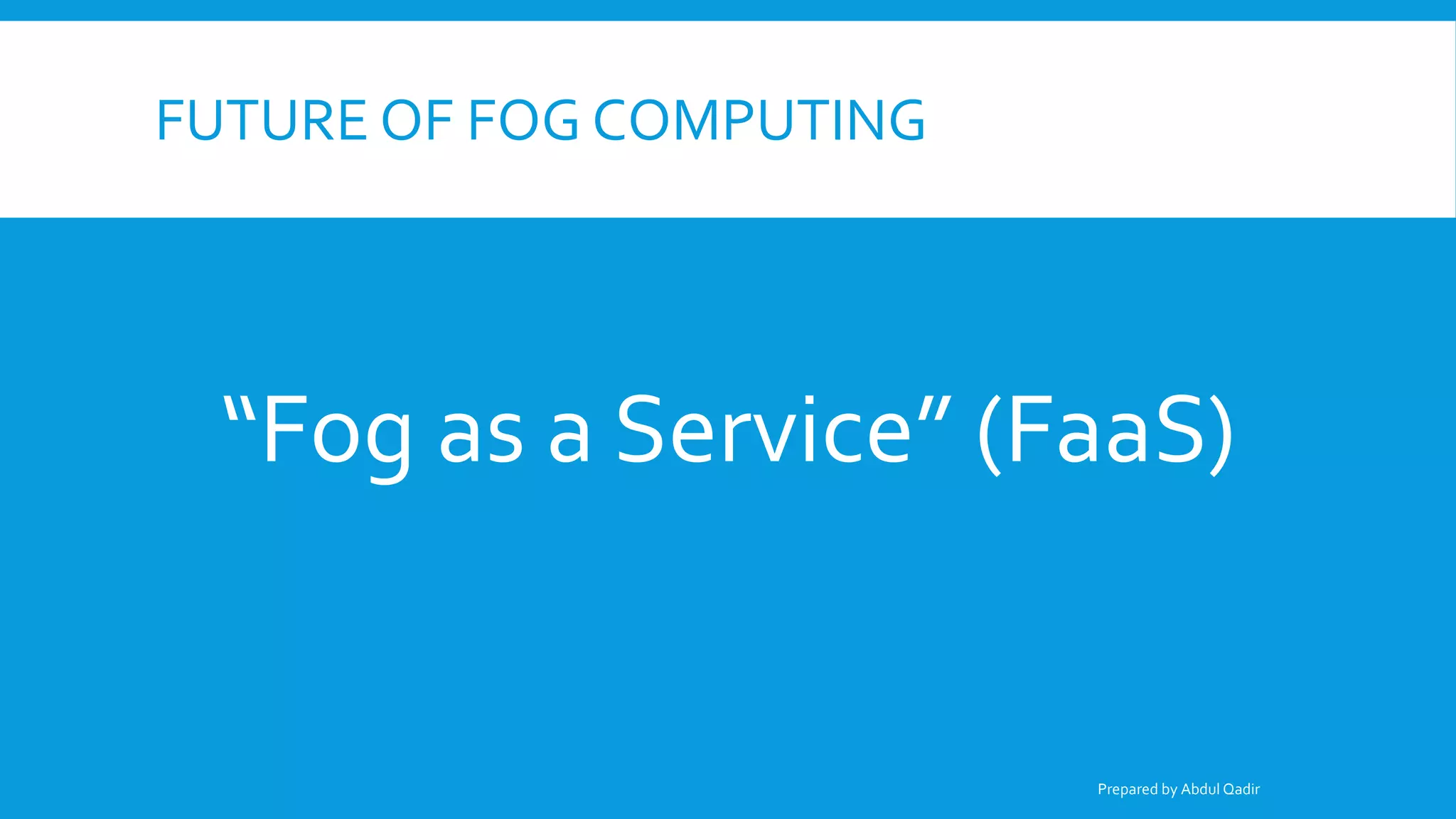Fog computing extends cloud computing by providing compute, storage, and networking services between end devices and cloud computing data centers. It places resources closer to end users and devices to enable low latency applications and real-time response. Key benefits include reducing bandwidth usage and latency for applications such as smart traffic lights that require reaction times less than 10 milliseconds. Fog computing complements cloud computing by handling local analytics and filtering data, while cloud computing performs longer term, resource intensive analytics.




























